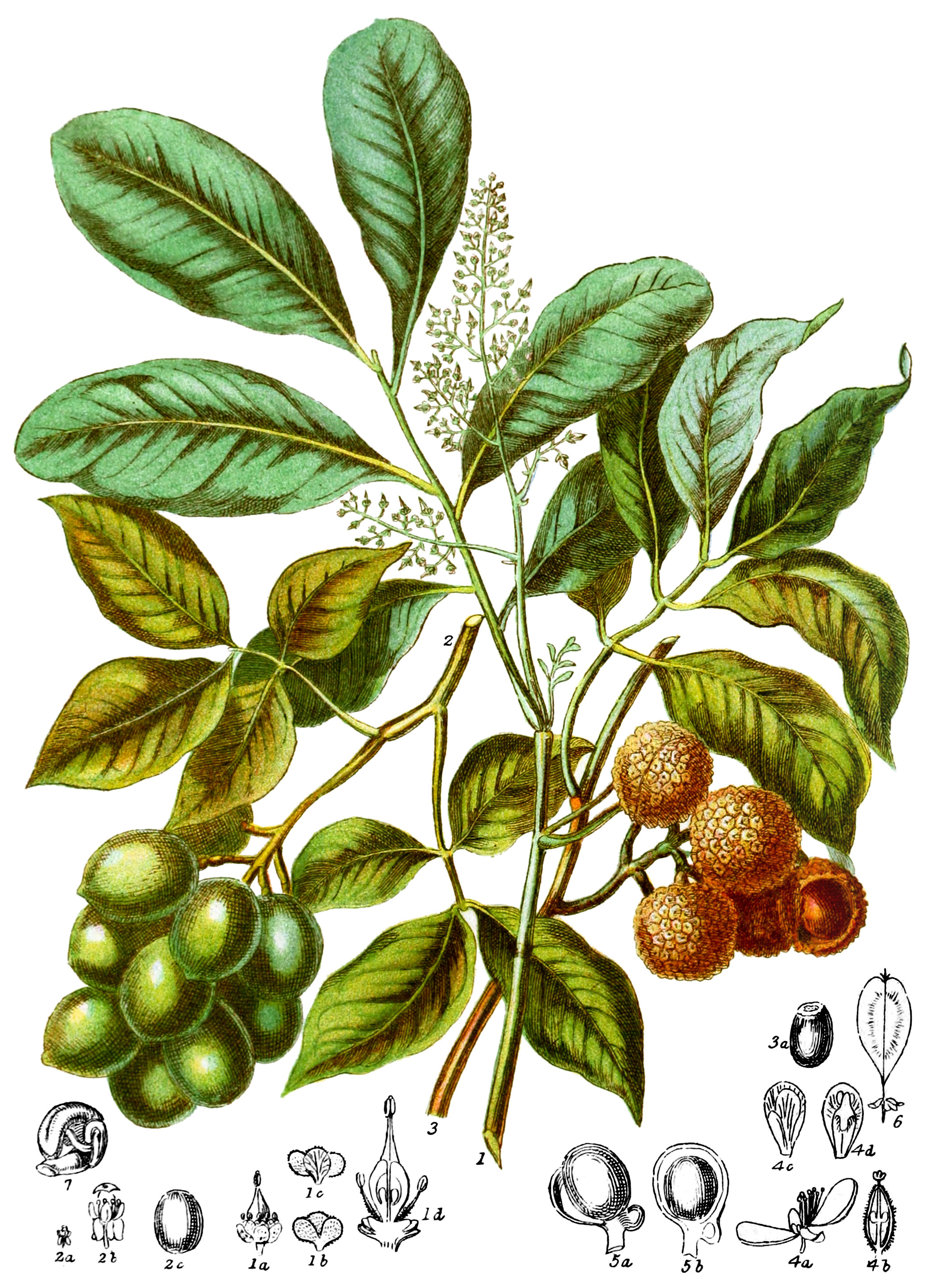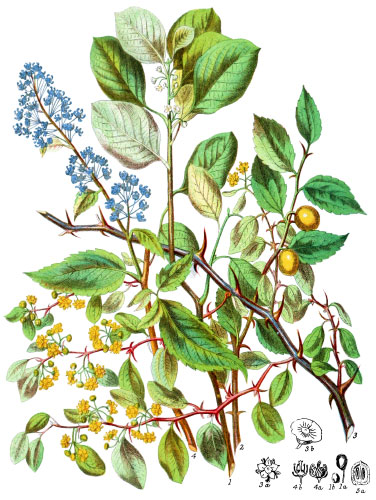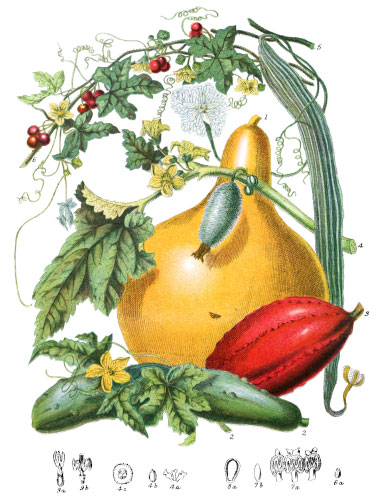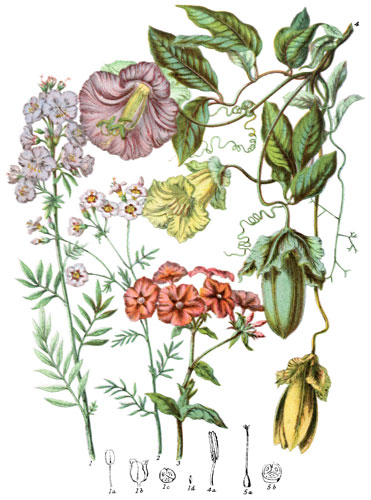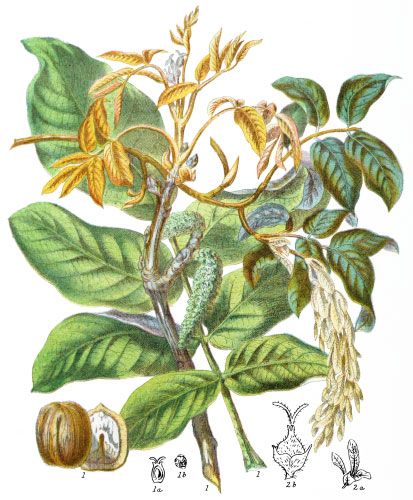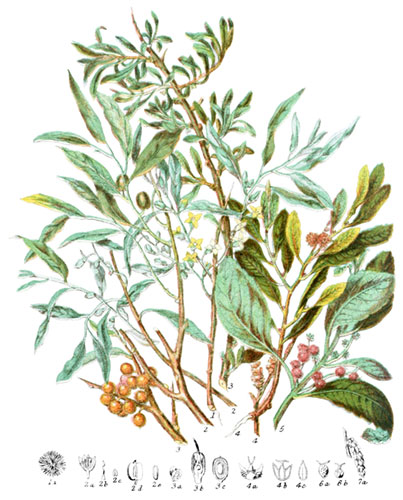Key characteristics
Trees, shrubs sometimes having tendrils, and a few herbaceous climbing plants. The stem has frequently several distinct axes of growth. The leaves are alternate, compound or simple, with or without stipules, often marked with lines or pellucid dots. The flowers are on branching stalks or panicles, small, generally white; the calyx is more or less deeply parted in four or five divisions, imbricated in the bud. The petals are four or five, occasionally absent, alternate with the sepals, inserted on the base of the disk, sometimes having an appendage in the inner side. The disk is fleshy, expanding between the petals and the stamens. The stamens are seometimes in separate flowers, they vary from eight to twenty; the filaments are free or combined at the base; the anthers turn inwards and burst lengthwise. The ovary is three-celled, the style simple, or more or less deeply two or three cleft. The fruit is sometimes a capsule, two or three halved, sometimes extended at the back into a membranous wing, sometimes fleshy and whole. The seeds contain no albumen, the embryo is usually curved or spirally twisted.
This Order has an affinity with the Horse-chesnut and the Maple tribe; with the former, in the saponaceous properties of the fruit; with the latter, in the winged fruit of some species.
The curved or twisted embryo is a general character of the Order, poisonous properties exist in many of the plants.
Select plants in this order
Not all plants listed are illustrated and not all plants illustrated are listed.
- Sapindus is derived from Sapo-indicus, Indian soap, the pulpy fruit being used by the Americans in washing linen, for which purpose it is very efficacious, requiring only cair to avoid injury from the acrid properties.
- The fruit of S. Saponaria, the common soap-berry, is about the size of a cherry, inclosing a shining black seed: the whole plant but particularly the fruit, is poisonous to fish.
- The flowers of S. juglandifolius (1) are of insignificant appearance, but of curious construction, the petals smooth and outside, but densely downy on the inner surface, where there is a two-lobed appendage arising from the claw, also downy; the stamens are hairy on the lower part.
- The leaves of S. frutescens (5)* are eleven inches long and three wide; the outer skin of the fruit is of a fine red colour, the inner pulp yellow, containing one black seed enveloped in a membranous covering. These glossy seeds were formerly brought to England and used as buttons, sometimes tipped with silver, and considered vyer ornamental as well as durable. In this and other species one of the cells alone ripens the seed, another remains imperfect at the base.
- S. esculentus affords a fruit much relished by the inhabitatnts of Brazil.
- Melicocca bijuga (2) is a tall elegant tree with shining foliage. The terminal branches bear numerous small white flowers of very grateful odour. The inner pulp of the fruit resembles the yolk of an egg in appearance, and has a sweet taste mingled with a little acid. In some parts of South America and in Jamaica it is much cultivated.
- Nephelium Litchi (3) is a favourite fruit in China, frequently brought to England in a dried state, and esteemed, although it possesses in a strong degree the peculiar mixture of sweet and acid flavour.
- N. Longan is another species, the fruit of which is eaten in China.
- Cardiospermum is a slender climbing plant, named from having a white heart-shaped scar on the black seed; the triangular capsule of C. halicacabum is extended at the back into membranous wings, whence it is sometimes called the Balloon vine. The flower-stalk has a pair of curling tendrils below the triple division; the petals are four, small and white; the singularity of the seeds appears to have early attracted the notice of travellers in the East and West Indies, for plants were raised in England in 1594. Although so slender in its growth, it climbs to the tops of the highest trees in Jamaica; various parts of the world are suited to it, being found at Rio Janeiro, in New Holland, Otaheite, and other isles of the Pacific Ocean.
- Urvillea (6) is a genus of a very similar aspect, and graceful climbing character, having compound triple leaves with tendrils at the base of each.
- Serjania is another genus of the same class.
- Paullinia pinnata is a strong narcotic poison, used by the natives of Brazil slowly but surely to destroy life.
- The fruit of Pappea capensis is eaten at the Cape, and an oil is obtained from the seeds.
- Ophiocaryon (7) shows the twisted embryo in the highest degree.
Locations
This Tribe inhavits most parts of the Tropics, especially of South America and India; it is found in Africa. Dodonea represents it in Australia. It is unknown in the United States of America, in Europe, and in all cold countries.
Legend
- Sapindus juglandifolius, Walnut-leaved Soap-Tree. Rio Janeiro.
- Flower, magnified.
- Petal, front.
- Petal, back.
- Section of Ovary.
- Melicocca bijuga, Honey-Berry. Jamaica.
- Flower,
- magnified.
- Seed.
- Nephelium Litchi, Chinese Litchi, China.
- Seed.
- Cariospermum anomalum. Brazil.*
- Stamen and Calyx, magnified.
- Section of Ovary.
- Upper Petal.
- Lower Petal.
-
- Fruit of S. frutescens.
- Fruit, open.
- Membranous Capsule of Urvillea glabra.
- Ophiocaryon paradoxum, Demerara Snake-Nut.
*4 was not pictured in the original illustration.
Explore more
Posters
Decorate your walls with colorful detailed posters based on Elizabeth Twining’s beautiful two-volume set from 1868.
Puzzles
Challenge yourself or someone else to assemble a puzzle of all 160 botanical illustrations.
